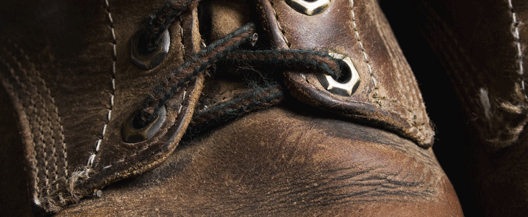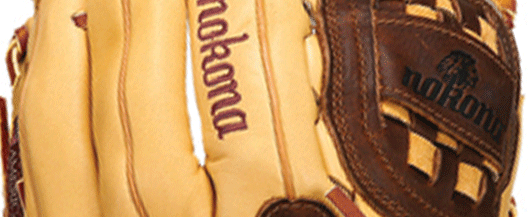LEATHER CARE PROBLEMS, FACTS AND SOLUTIONS
Leather provides one of the world’s most unique, durable, and luxurious materials for furniture, clothing, boots, and accessories. Each piece is individual and over time will create a favorite pair of boots, a favorite saddle, or a beloved yet worn out leather coat.
Leather has been manufactured and processed all over the world for thousands of years and known tanners guilds existed in England as far back as the twelfth century. Tanning is the process of treating the raw hide to keep it soft and flexible and to protect it. Technology and methods have changed considerably over the years and now tanneries produce a remarkable variety of colors, textures, thicknesses, and finishes on leather. Tanning processes include chrome, vegetable, dry and wet. Knowing which tanning process has been used on your item will help you avoid common leather care problems. We have chosen a few leather care problems and given solutions in this article.
NATURAL OILS vs. HARMFUL CHEMICALS
Obenauf’s
® leather preservatives contain no harmful chemicals that can damage your leather. Our Heavy Duty LP has
natural oils suspended in a Beeswax/Propolis* formula. In the leather these oils gradually seep out of the Beeswax/Propolis* as a time released lubrication that restores inner fibers while reinforcing the surface against scuffing and abrasion. If exposed to heat or constant flexing, the oils are released faster, so instead of getting parched, your leather gets oiled when and where it needs it most.
Leather care problems can be created by the wrong ingredients. Many products claiming to be conditioners or preservatives are not. These other so called "conditioners" contain harmful chemicals, mink oil, petroleum, pine tar, paraffin, or alcohol to soften or waterproof leather. They soften by weakening or decomposing the fibers and they waterproof by sealing the pores! They are priced low but definitely not economical when you consider the damage done to fibers, stitching, and glues. Ironically, these so called “conditioners” actually shorten the useful life of your leather. Restoring with only natural oils is the key to preserving your investment in leather.
*Propolis (or bee glue) is an anti-bacterial resin collected from trees by honeybees to water proof and disinfect their hives. It provides a durable barrier against chemicals, bacteria, mold, and mildew. Propolis resists water better than regular water resistant products.
LET IT BREATHE
Leather “breathes” through its pores to vent sweat (salt and body acid). Never seal it off with paraffin or carnauba wax, or these acids build up and cause dry rot. Salt and lack of oils cause premature cracking when dry fibers are flexed and broken. These irreparable damages will shorten the service life of leather. The solution to this leather care problem? Natural preservatives. True preservatives are natural and cost more, but they are your best protection.

DRY WEATHER RUINS LEATHER
Another of many leather care problems is the damage caused by dryness, heat, and loss of oils. Water washes leather oils out, causing it to dry stiff and hard. Oils also dissipate every day when it’s dry, just like your skin. Wind, warm air (floorboard heaters), dust, chemicals, mud, and normal wear (flexing) increase the rate of oil loss. Dry fibers scuff easily, wear against each other, get brittle, and break prematurely causing cracks in your leather.
Dry leather also cuts stitching and is prone to dry rot.
The solution is: Do not let the fibers dry out, lubricate periodically with natural oils.
TREATING & CLEANING LEATHER AFFECTS COLOR
Leather comes in a variety of colors, shapes, and textures. Its appearance is determined by the type of hide, the tanning process and whether it has been dyed or treated by the tannery. Failing to contact the manufacturer for recommendations can also cause leather care problems. Because different leathers need different types of care. In most cases you can expect some change in color and possibly texture when you treat or clean your leather. Always make sure you test in an inconspicuous area BEFORE treating your entire piece. You should allow 7 days for the true color to show, and in many cases, as the liquid is absorbed, the color will lighten.
SOFT TEXTURED LEATHER LIKE SUEDE AND NUBUCK
Soft textured leather like suede, nubuck, and shear-ling lambskin are magnificent to touch and feel. However, suede and lambskin must be approached differently to clean and protect.
If you remember this, leather care problems with suede can be avoided. Suede is very porous and will soak up any liquids causing stains. Take suede garments to a commercial dry cleaners for cleaning when necessary. Have a clean cloth and suede brush on hand for cleaning suede and short textured leathers. Stains are a challenge since you can’t use any liquid cleaner without affecting the texture and possibly “matting” the finish. Blot out any liquids ASAP with a clean cloth. Try rubbing corn meal gently into the stain to absorb it and let it sit overnight. Then use your suede brush to remove the cornmeal. Treat it without oiling by spraying with
Obenauf’s Water Shield. It will provide a surfactant water and stain barrier.

STORING LEATHER
Storing leather requires special consideration to keep it in good condition and properly protected. To avoid problems when not in use, store leather in a ventilated, cool, dry area that is neither too hot nor cold and never damp. Avoid direct sunlight, which will dry and fade leather. Always use padded hangers to help reserve the shape and do not enclose it in plastic. Use a breathable, cloth-like cotton cover, such as a pillow case. Hides should be rolled in canvas or an old blanket, and furniture should have a blanket covering when in storage.
CLEANING LEATHER
Common leather care problems often occur during regular cleaning. Cleaning leather can be a tricky proposition since the very act of cleaning it could damage the leather. So be careful and do not scrub it. Avoid commercial detergents. Heavy soiled areas may require treatments with a leather cleaner or mild soap and water. Obenauf's
® leather cleaner, CLEANIT, is an excellent option and works best when sprayed on heavy, allowed to sit for a minute or two, then rinsed or wiped off. Keep in mind that leather cleaners remove dirt and oils, resulting in a lighter, dry looking leather. Applying Leather Oil after cleaning and drying will restore the lost oils and enrich the leathers natural color.

DEALING WITH STAINS ON LEATHER
The hardest to fix among leather care problems is stains. Stained leather is a tough proposition, and in many cases there is not much you can do about it. If you are dealing with a fresh stain you need to act quickly to prevent it from setting. Using a dry cloth, blot it or soak it up. Then with a damp cloth, wipe it off as quickly as possible. Stains from greasy or oily substances can often be lifted out by sprinkling powdered chalk on the area (DO NOT RUB IT IN) and letting it set overnight. Use a soft brush or cloth to remove the powder. Lighter stains can often be “hidden” by treating the article with Obenauf’s
® Leather Oil since it will darken the overall color of your leather item upon application. We always recommend you first test in an inconspicuous place to assure you are pleased with the results which may take 7 days for final color to show. Serious stains that appear to be well set may be irreparable. In this case, your best bet is to consult a local leather expert who may be able to offer some suggestions about professional cleaning options.
DEALING WITH MOLD AND MILDEW ON LEATHER
The most undesired among leather care problems is mold and mildew growth. Mild vinegar and water solution kills mold at the root. Once you have eliminated the mold, you need to immediately treat the article with Obenauf’s® Leather Oil or LP to restore the natural oils. Leather Oil and Heavy Duty LP have anti-bacterial properties that will provide protection from future mold and mildew problems. Dirty and damp leather will mold. Keep it clean and treated with a preservative and stored in ventilated dry areas.
|
|
|